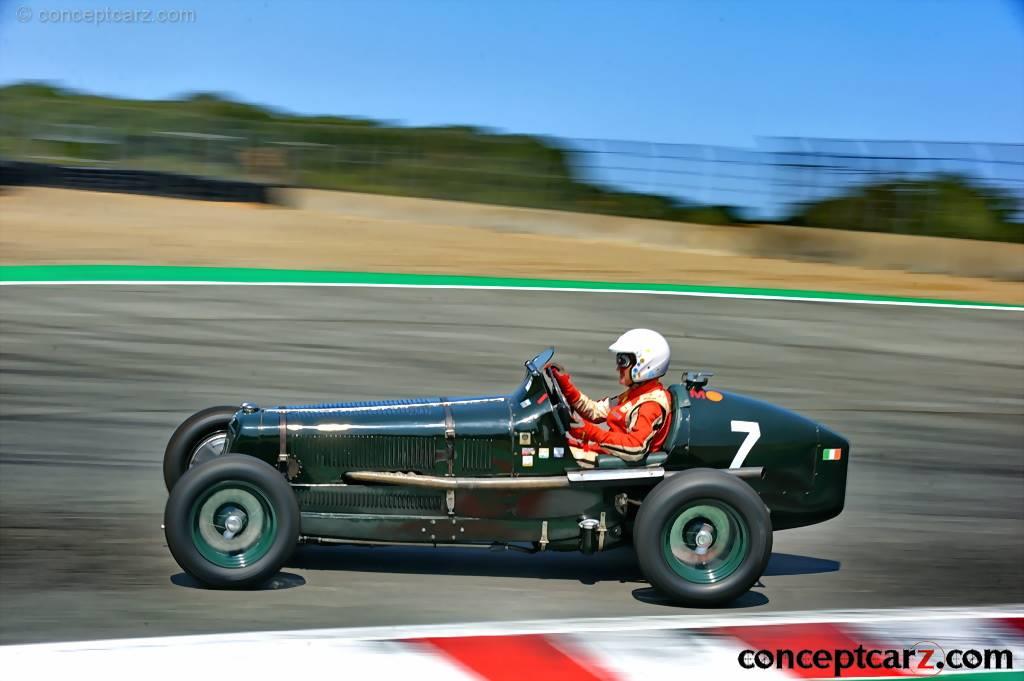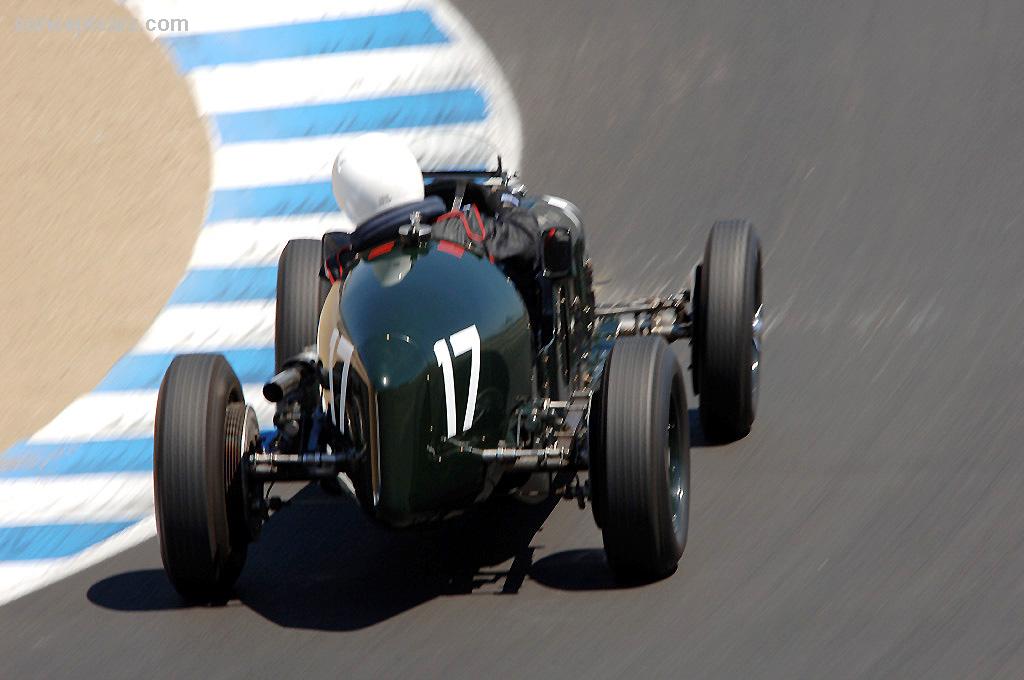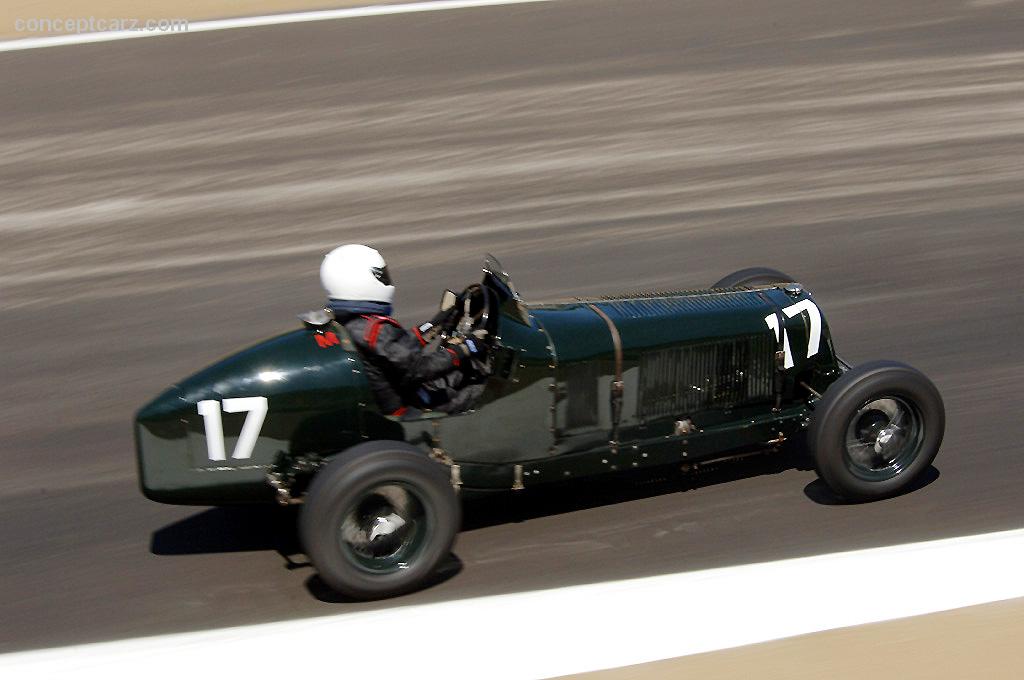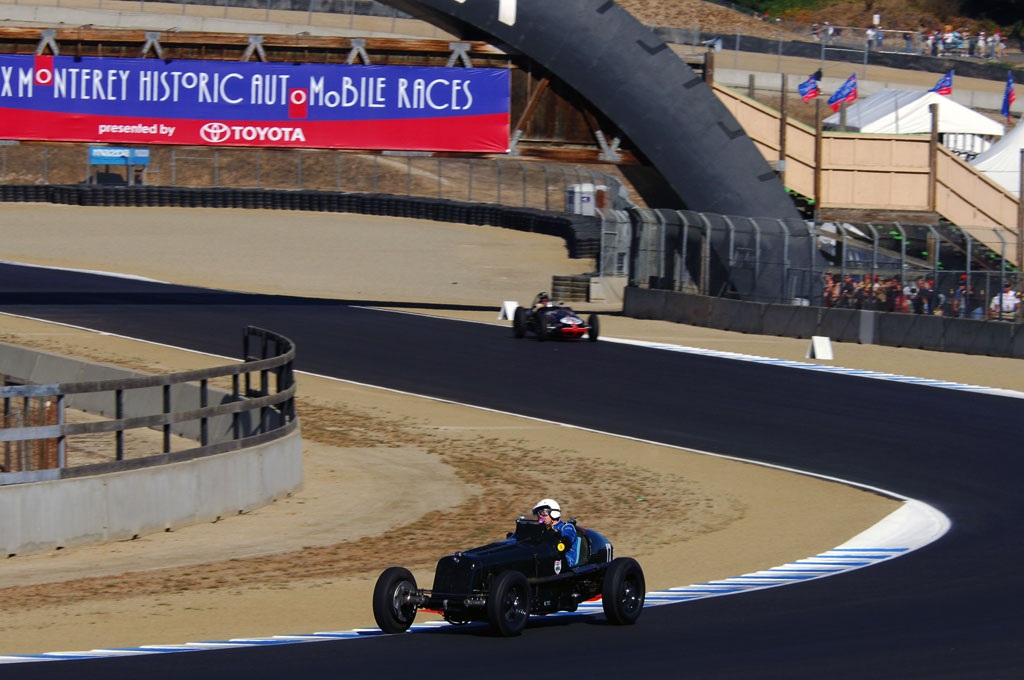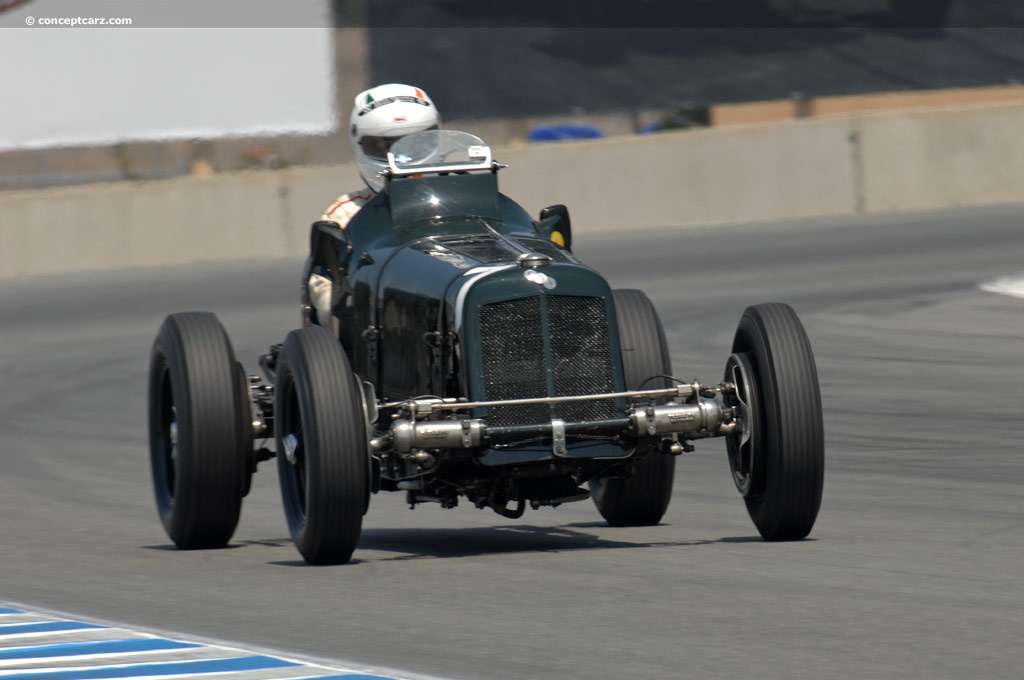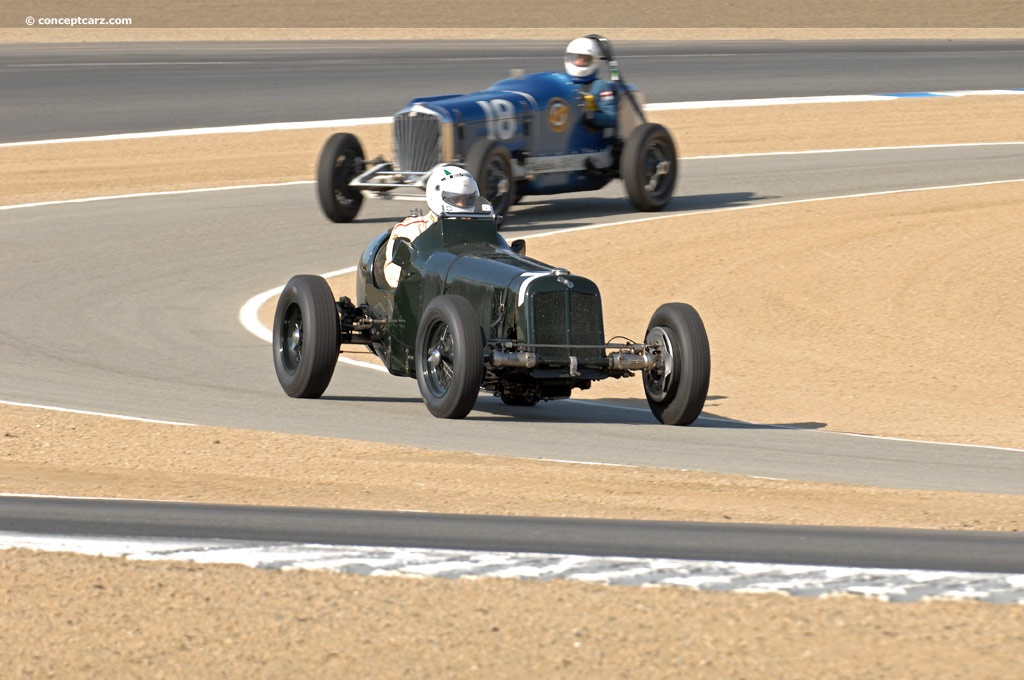1934 Era R2A Navigation
It had been since 1923 and the French Grand Prix when a British car last had seen victory in a grand prix. Armed with the desire to bring an end to the drought, Humphrey Cook, Raymond Mays, and Peter Berthon bought a lot in 1933 behind the home of Mays and established English Racing Automobiles (ERA). In 1933 governments began investing in the likes of Alfa Romeo and other teams making the costs of competitive grand prix racing rather high. As a result of this, the three men of ERA quickly became disenchanted with their chances in grand prix racing. Instead, the men decided to enter competitive racing through another door, a door through which ERA would become popular for its customer cars. This move would later result in many ERA models filling the field and making an assault for Formula One's first ever title. Cook, Mays and Berthon gave up on grand prix racing right away in favor of entering the very competitive 'Voiturette' ('small car' in French) class. To be as competitive as possible early model ERAs were designed with a wide range of engines from 1.1 and 1.5 liter supercharged engines to a 2.0 liter normally aspirated engine. Although teams and manufacturers, like Mercedes Benz, were competing in the top grand prix classes, ERA would have no easy go of it in the Voiturette class with companies like Maserati around. In 1934 ERA entered their first race at Brooklands, and though not as successful as say…Maserati and their debut performances, by the end of the season ERA had scored some rather impressive victories. ERA continued its success in 1935. The most memorable race of that year for ERA had to be at the Nurburgring in Germany when ERA machines scored 1st, 3rd, 4th, and 5th place finishes. From 1935 till before the outbreak of World War II ERA proved to have the dominant chassis in Voiturette racing. Very soon, the men decided to try and make a go against the bigger competition in grand prix racing. Focus shifted, from that point on, to making an all-new competitive chassis. Yet while ERA shifted its focus to one specific chassis, by the time of the first ever Formula One race in 1950, there would be no fewer than 4 or 5 different ERA models that would race into Formula One's history. Four of those models that would compete in Formula One's inaugural season were the A, B, C and D type chassis that originally began their racing careers in the Voiturette class and helped ERA become dominant throughout the 30s and would become a smart option for smaller teams to purchase that wanted to compete in Formula One. In fact, the A type chassis was one of ERA's original customer cars. The A type chassis was designed with a box-like body. The nose sported a rectangular-shaped radiator inlet along with the front wheel axle and control arms protruding out beyond the nose. The chassis continued the rectangular shape all the way back to the driver and then blended into a wedge shape at the rear of the car. With the exception of a slightly contoured top of the bodywork, the ERA A type chassis had nothing like the smooth aerodynamic lines of the Maserati 4CL, even the Alfa Romeo 158. However, the A chassis did utilize a Wilson 4-speed pre-selector gearbox and an inline 6-cylinder engine capable of producing over 160bhp. One other component aspect of the ERA chassis was the employment of large drum brakes. This ensured rather good braking power as a compliment to its fantastic acceleration. The combination of these components, the semi-elliptic springs and Hartford dampers made the A type a competent competitor. But one of the more popular chassis models for ERA was its B type. The B type was practically the same as the A version, just with the benefit of time to help ensure the car's reliability. The fact the B was produced in 1935 was the only real difference between it and the A. The B would go on to score some impressive wins and finishes and would be sought after by many individual racers including Prince Bira. The C type came along in 1937 and again shared great similarities to the A and B chassis. However, the C model was introduced with a slightly different range of engines. The A and B models came with three engine variants, which were practically the same only each had a different liter rating. The only real difference between these models and the C was that the 1.5 liter engine became the base model and a 1.75 liter intermediate option was added. There were some other changes that were made as well including a change in the suspension and control arms. Hydraulic dampers were installed on the rear suspension while the front suspension was changed entirely going from the elliptic leaf springs and friction dampers to a trailing arm arrangement with transverse torsion bars and hydraulic dampers. The C, however, still boasted the same ladder-frame chassis with aluminum panel bodywork. In 1938 ERA produced its model D chassis. This chassis was merely a continuation of the C model. There was practically no difference between this model and that of the C. Similar to the A and B models, the only difference between the D and C models was the fact the D was produced in 1938, instead of 1937. Competition in Voiturette was tight since many other companies decided to race in the class instead of spending large sums of money and perhaps have nothing to show for it in grand prix racing. To take on this competition ERA commissioned the E type variant, which would begin construction in 1938. As the model started in the design phase Cook, Mays and Berthon shifted their thinking a bit and made it a priority that the E type be designed for the Voiturette series, but also, capable of being employed in grand prix races. This meant the E type would have to compete against the 3-liter engine chassis of the day. Peter Berthon took on the task of designing the new E type chassis. This daunting task grew all the more difficult with World War II looming just over the horizon, meaning resources were limited. It also didn't help when the intentions of ERA and the purpose for which the E type was being built became known to the public. Not only did ERA have their own ambitions, now they were carrying the hopes and dreams of many a British racing fan wanting to see English vehicles rise to the top of the grand prix racing world once again. The overall appearance of the E type chassis was a radical departure from the look of all previous ERA chassis. The most obvious difference between the E type and all the previous models had to be in aerodynamics. The A—D models looked like rectangles being pushed through the air, whereas the E model looked more like a torpedo from the side.The overall shape, when viewed from either the front or the rear of the car would have to be considered diamond-like. It appears to be an upside-down T in its design but the contour of the bodywork at the bottom makes it similar to a sideways-turned diamond. The nose of the car was still rather blunt, but was much more contoured and, therefore, appeared much more aerodynamic. The large radiator inlet appeared as two separate parts looking like two hearts turned to opposing angles. Despite the new construction technology of the day, the construction of the chassis of the E type remained conventional, albeit with two tubular members that ran down the side of the car. The diamond/T design led to the E sitting lower than ERA's previous cars, meaning the center of gravity was lower, resulting in better stability. But the design also helped in other ways. Suspension components could be partially hidden, to the point that only control arms and the large drum brakes and the inlets to cool them would be all that could really be seen past the bodywork. The use of trailing links and torsion bars on what would become the GP1 would further help to hide components within the bodywork.The upside-down T or sideways diamond meant a tall ridge in the bodywork design ran down the top, perfect for fitting over the inline 6-cylinder engine, supercharger and other engine components. The cast iron block engine was further tweaked to enable around 260 bhp to be produced. The exhaust pipe ran discreetly out from the lower-left side and back toward the rear of the car on the underside of the bodywork. This meant the overall look of the chassis was very clean and there was no hot exhaust pipe running back past the driver's cockpit. To help with stability, especially at the rear of the car, the DeDion axle was employed in the rear suspension. Steering was accomplished through a complex rack-and-pinion system. The overall design appeared to be very similar to the dominant Mercedes Benz Grand Prix cars. Indeed, the lines and the styling were similar. Even the design and layout of some of the car's components seemed practically a blatant copy. And yet, though something may appear to be a copy of another, it's still different and doesn't automatically guarantee success. And this could be not have been more true than with the E type chassis. It perhaps looked like the Mercedes Benz cars but it certainly didn't perform like them. Of course, it could be argued, and a strong case made, the outbreak of World War II hinder the development of the E chassis. The E type chassis made its debut in 1939 as GP1at Brooklands and the International Trophy. Though designed for a bigger engine in order to compete with the large 3 and 4.5 liter cars in grand prix races, the E type would arrive with a 1.5 liter engine in order to compete in the Voiturette class. The new design did little, however, to provide ERA confidence for its future prospects. In fact, the car was withdrawn even before the race when it proved to be very uncompetitive in relation to the competition during practice. The GP1 headed to France for a grand prix in Reims. Though terribly embarrassed in its debut, hopes were that the GP1 would have a better showing given the extra time to update and further improve the car. This was not to be, however. The car showed great speed on the straights but the handling proved to be a frightful nightmare. The steering on the GP1 was a complex mess of gears which made it feel as though the driver had little direct control over the chassis, not a feeling desired by a driver when traveling at over 100mph. World War II started and ERA's hopeful chassis had provided the team no real glimmer of hope except for having led just one race—in which the car would later crash. After the war, ERA didn't look the same and this undoubtedly affected the success, or lack thereof, the company experienced. During the war there was a halt to racing and ERA's home location in Bourne was taken and used to produce aircraft components. Due to the fact the company had been converted to produce aircraft components and was not really prepared to produce race cars, Berthon and Mays departed the company. ERA did come back to life in 1947, but in Dunstable and under a new owner, Leslie Johnson. There would be a number of ERAs that would take part in Formula One's debut season, and not just the GP1 either. However, given the fact of the age of the A, B, C and D chassis, the poor performance of its successor the GP1, the war and the lack of money, talent and time to truly invest in the development of the GP1 after the war, it is of little surprise the only noteworthy aspect of ERA's involvement in F1's first season what that they took part and added further color to Formula One's early years. What started out as a dream would end up looking, instead, like a fantasy, an apparition, not a goal. The failure of the GP1 and the inability to further invest in or scrap the design altogether and move on due to the looming war hindered ERA. The limited resources and money afterward also hindered investment in what works there were that could have been a help ERA in achieve its goal of restoring British manufacturers to the top of grand prix racing. These facts put the company behind the proverbial 'eight ball' when compared to other similar-sized teams, and really spelled imminent death for ERA. However, the company's earlier success with their A—D chassis meant the memory of ERA would live on in fondness. ERA Gold Portfolio, 1934-1994, Brooklands Books
BARKER J. R. W. - E.R.A. A Concise Story, Middlesex 1992
'English Racing Automobiles.' Wikipedia, The Free Encyclopedia. 22 Dec 2008, 13:59 UTC. 19 Jan 2009 By Jeremy McMullen
BARKER J. R. W. - E.R.A. A Concise Story, Middlesex 1992
'English Racing Automobiles.' Wikipedia, The Free Encyclopedia. 22 Dec 2008, 13:59 UTC. 19 Jan 2009 By Jeremy McMullen
The name ERA was short for English Racing Automobiles. Prior to World War II, the ERA Company had built a successful business designing and creating fast and dependable racers. Raymond Mays and Humphrey Cook were the co-owners. There were four iterations of the racers; all were built in low numbers with the Type C being a Type B with modifications. The Type D was a Type C with modifications.The vehicles were raced in hill climbs and various races amassing many wins and standing start records. Many of the ERAs were given a 1500cc supercharged engine that featured camshafts on both sides of the engine. One was for the exhaust valves and the other operated intake valves. Both were actuated by pushrods. A 1.1- and 1.5-liter version were available, with the 1.5-liter supercharged version producing nearly 170 horsepower. A Wilson pre-selector four-speed manual gearbox sent the engine's power to the rear wheels in a controlled fashion. Reid Railton was hired as the designer of the cars; he began with a ladder-frame chassis and incorporated live axles with semi-elliptical leaf springs with Hartford friction shock absorbers. The total vehicle weighed just over 2000 pounds, and required large drum brakes to keep the car in the driver's control. In total, there were four A-Types constructed, beginning with the R1A and continuing to the R4A. The A-cars were factory works cars, campaigned by ERA during the 1934 and 1935 season. The B-Type series was created for the privateers, beginning with the R1B and continuing to the R14B. Due to superstition, the number 13 was skipped. In 1935 there were thirteen Type B racers created which were campaigned with some success. Lord Howe and Raymond Mays are the more notable drivers who championed their Type B racers to impressive finishes. The Type B was similar in design and mechanical components of the 1934 Type A. Raymond Mays and Humphrey Cook, both saw seat-time at the racing circuits in the Type A during the 1930's. After World War II, the Type A was raced in the 1950 Monaco race by Bob Gerard. Behind a strong field of Alfa Romeos and Ferraris, Gerard qualified in sixteenth place, just thirteen seconds off the pole position. A nine-car pile-up at the first turn of the race helped ensure a sixth-place finish for the agile racer.Three of the Type B's were further developed resulting in the Type C. The main differences were the changes to the suspension. The Type C was given trailing arms, hydraulic dampers, and transverse torsion bars on the front.Cuth Harrison campaigned one of the Type C racers, the R8C, at three races during the 1950 season.Further work on the supercharger resulted in the Type D. The design remained the same. Raymond Mays raced the Type D prior to the War but it never competed in any World Championship events.
by Daniel Vaughan | Jun 2007
by Daniel Vaughan | Jun 2007
- 1934 Era R2A Menu
- Article
- Image gallery
- Specifications
- Production figures
1934 Era R2A Vehicle Profiles
Recent Vehicle Additions
Related Automotive News

Renault Sport Formula 1 Team: Formula 1 2018 Rolex Australian Grand Prix Preview
Foreword from Renault Sport Racing Managing Director, Cyril Abiteboul
Ahead of us is a very long 21-race calendar during which many things will happen. This puts a premium on stability and consistency, which we feel we have increased as we enter...
The Stuff of Legend: Prince Bira, The Mighty Mouse of Siam
In the film Tombstone there is an exchange of dialogue between Wyatt Earp and Doc Holliday. The subject is life. Earp says, All I ever wanted was to live a normal life. To which Holliday responds, There is no normal life, theres just life......
Harry Schell: American Bleue
Americans would officially set foot on French soil during the Second World War in 1944. However, after a few years, the troops would leave, yet, there would be one that would remain. He had been in Europe long before and he would be there still when...

An Era of Perspective
Everyone loves a champion. At least that is the saying. But it isnt necessarily true. Instead, everyone loves their champion. When another proves to be equal or stronger, then all reason slips through the window when judging skill.
The lamentations...

1954 24 Hours of Le Mans: A French Bull Runs to Victory at Le Mans
Everything needs to be right amongst drivers competing for victory in the 24 Hours of Le Mans. Not only do they need to share the car over the course of a whole day but their driving styles must compliment each other. In the case of the 1954 24 Hours...
